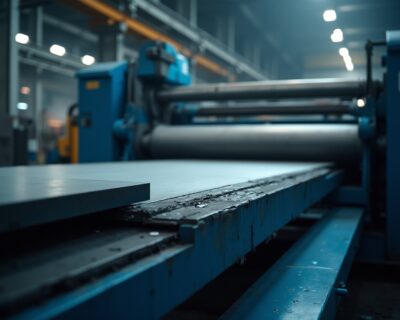Blog

Understanding Aluminum Nickel Alloys: An In-Depth Tutorial on Properties and Applications
Introduction
The remarkable properties of aluminum-nickel alloys position them as essential materials across various industries, from aerospace to renewable energy. Their unique combination of corrosion resistance, lightweight characteristics, and enhanced conductivity not only meets the demands of modern applications but also influences strategic procurement decisions.
As industries increasingly seek to enhance performance while minimizing environmental impact, understanding the manufacturing processes, compliance standards, and emerging trends surrounding these alloys becomes paramount.
This article delves into the key properties, applications, and future directions of aluminum-nickel alloys, providing valuable insights for procurement managers aiming to make informed decisions in a rapidly evolving market.
Key Properties of Aluminum-Nickel Alloys
Aluminum nickel alloys possess several important characteristics that make them extremely useful in various fields. These properties include:
- Corrosion Resistance: Notably, aluminum nickel alloys demonstrate exceptional resistance to corrosion, a characteristic that is critical for applications in marine and chemical environments.
Recent analyses indicate that at flow rates of 7.6 m/s, localized corrosion rates can escalate to 2 mm/year, emphasizing the need for strong selections in corrosive settings. The mechanism of crevice corrosion in nickel-aluminum bronze is primarily driven by local acidification, rather than merely copper-ion concentration cells, which underlines the importance of understanding these mechanisms in material selection.
- The natural lightweight nature of aluminum nickel alloys, which are enhanced by the presence of nickel, results in a superior strength-to-weight ratio.
This characteristic makes these metals especially appropriate for aerospace and automotive uses where weight reduction is crucial.
Enhanced Conductivity: The incorporation of aluminum nickel alloys significantly enhances the electrical and thermal conductivity of aluminum-nickel mixtures, making them advantageous in electronics manufacturing where efficient thermal management is critical.
Heat treatment processes can elevate the strength of aluminum nickel alloys, making them effective for structural applications where high mechanical durability is required.
A recent study on nickel-aluminum bronze highlights how these substances can withstand severe conditions, reinforcing their suitability for demanding environments, particularly under high chloride concentrations.
- Ductility: Aluminum nickel alloys exhibit commendable ductility and formability, allowing for versatile manufacturing processes such as extrusion and rolling, which are essential for creating complex shapes and components.
Understanding these properties is vital for the strategic selection of materials that directly influence performance and longevity. As B.G. Ateya observed in his research on erosion corrosion, the complex balance of these properties corresponds effectively with the needs of various industrial uses, especially in demanding environments.
Moreover, the analysis highlights that Ni-bronze mixtures perform better in such conditions, qualifying them for uses requiring strong mechanical durability and corrosion resistance.

Applications of Aluminum-Nickel Alloys in Industry
Aluminum nickel alloys exhibit outstanding versatility and performance across a wide range of industrial uses, making them essential in strategic sourcing choices. Key applications include:
Aerospace Components: Renowned for their lightweight and high-strength characteristics, these metal combinations are integral to aircraft structures and components.
Their use significantly enhances fuel efficiency and overall performance, aligning with the industry’s push for sustainability.Automotive Parts: Within the automotive sector, these materials are critical for manufacturing engine components, wheels, and body panels, where reducing weight is essential for optimizing fuel efficiency and vehicle performance.
As the automotive sector increasingly emphasizes lightweight substances, metal composites are gaining popularity, backed by an anticipated growth of 5.1% CAGR in the Asia-Pacific market through 2033.Electronics: The outstanding conductivity of aluminum-copper combinations positions them as ideal materials for connectors, circuit boards, and heat sinks in electronic devices.
This improves the performance and reliability of various electronic uses, thereby affecting procurement decisions.Marine Equipment: Recognized for their corrosion resistance, aluminum nickel alloys are particularly suitable for marine applications, including ship hulls and fittings that endure severe environmental conditions.
The corrosion-resistant section significantly dominated the global nickel mixtures market in 2023, highlighting the substance’s importance in marine products.Energy Sector: Their durability and efficiency are increasingly utilized in renewable energy uses, such as solar panels and wind turbines.
This increasing trend emphasizes the metals’ potential in promoting sustainable energy solutions.
A comprehensive grasp of these uses not only improves procurement strategies but also guarantees that the appropriate materials are sourced to fulfill changing industry requirements effectively.
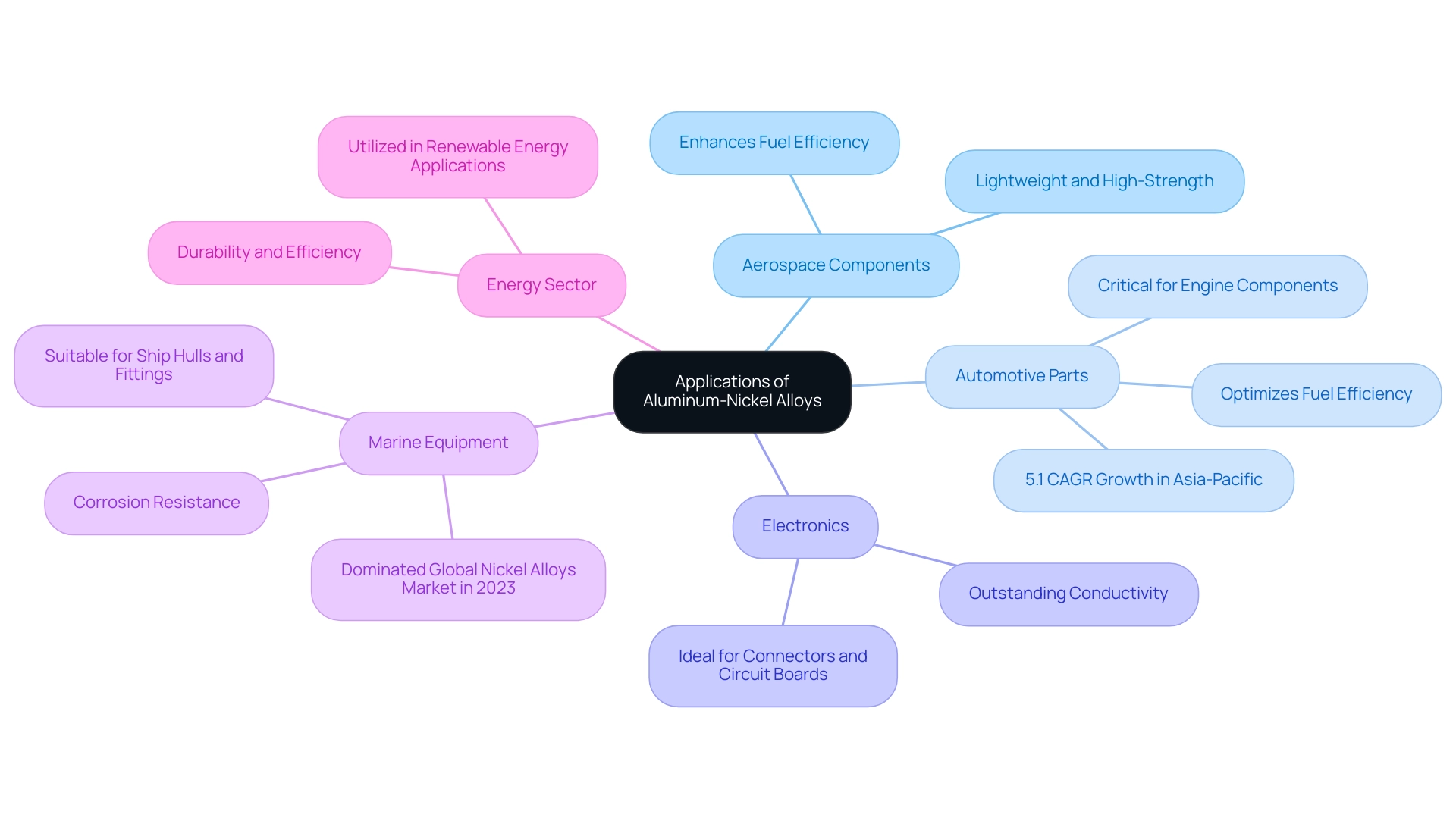
Manufacturing Processes for Aluminum-Nickel Alloys
The production of metal mixtures involves several essential processes that greatly impact their characteristics and appropriateness for different uses. The key processes include:
Casting: This technique involves pouring molten aluminum nickel alloys into precisely designed molds, enabling the production of intricate shapes essential in industries such as aerospace and automotive. Recent statistics indicate that advanced casting processes have led to improved efficiencies in producing complex geometries, enhancing the overall performance of components. As noted by Michael Stoschka (2020), the statistical size effect in cast aluminum plays a crucial role in understanding material behavior under various loading conditions.
Forging: Utilizing compressive forces to shape the material, forging enhances mechanical properties, resulting in components that exhibit high strength and toughness. This method is particularly valuable for essential uses where reliability is paramount. Experts observe that the forging process can significantly influence the fatigue resistance of the material, ensuring that it meets rigorous operational demands. A relevant case study titled “Verification of Size-Effect Related Fatigue Strength” demonstrated how a probabilistic model evaluated the local Weibull factor, validating the influence of disconnected highly-stressed volumes on fatigue strength.
Machining: Precision machining techniques, such as CNC machining, are employed to achieve tight tolerances in components. This level of accuracy is essential in ensuring that parts conform to stringent specifications, thereby enhancing performance and reliability across various uses.
Heat Treatment: The heat treatment of metal mixtures is instrumental in enhancing their strength and hardness. This process is crucial for applications requiring high performance under significant stress, as it directly influences the material’s resilience. Recent discussions in manufacturing circles have emphasized the importance of optimizing heat treatment parameters to maximize the benefits.
Joining Techniques: Understanding the various joining methods, including welding and adhesive bonding, is essential when working with aluminum-copper mixtures. These techniques are critical in industries where the need for lightweight yet robust joints is paramount, ensuring that the assembled components maintain structural integrity.
These manufacturing methods not only play a crucial part in shaping the performance traits of aluminum nickel alloys but also greatly affect procurement choices. The applicability of design concepts for notched components, particularly in relation to different load cases and local stress gradients, is a current topic of investigation, making it essential for procurement managers to consider these factors when evaluating potential partnerships. Suppliers’ capabilities in these areas can dictate the overall quality and effectiveness of the final products.
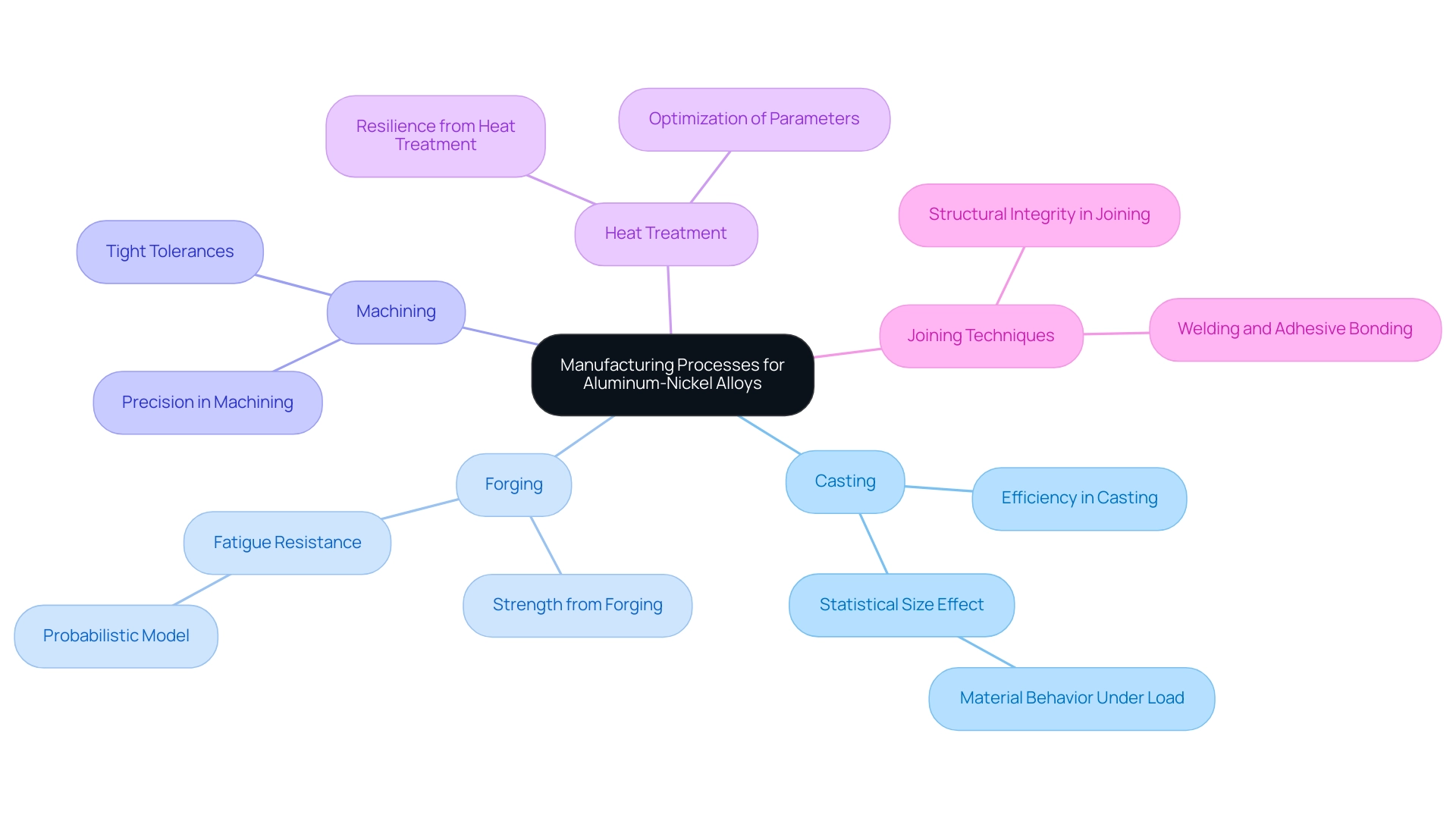
Standards and Compliance in Aluminum-Nickel Alloys
Adherence to global standards and regulations is essential for guaranteeing the quality and safety of these metal combinations. Procurement managers must consider several key factors:
ASTM Standards: The American Society for Testing and Materials (ASTM) has established numerous standards that specify the mechanical properties and testing methods for non-ferrous metal combinations.
Standards like B880-24 outline the general requirements for chemical check analysis limits for nickel and its compositions, ensuring rigorous quality assurance practices. Furthermore, the recent B878-97(2024) standard test method for nanosecond event detection for electrical contacts and connectors provides additional insights into the evolving landscape of ASTM standards relevant to aluminum alloys.ISO Certifications: It is imperative that suppliers possess ISO certifications, demonstrating their adherence to quality management systems.
This certification not only reflects a commitment to consistent product quality but also enhances supplier credibility in the marketplace. Recent statistics indicate that ISO-certified suppliers significantly outperform their non-certified counterparts in terms of reliability and customer satisfaction.RoHS Compliance: In the electronics sector, aluminum-nickel mixtures must comply with the Restriction of Hazardous Substances (RoHS) regulations.
This compliance ensures that the metals are free from harmful materials, a critical consideration for product safety and environmental sustainability.REACH Compliance: The Registration, Evaluation, Authorisation, and Restriction of Chemicals (REACH) regulation is another important criterion that suppliers must meet.
This regulation requires comprehensive evaluations of substances utilized in mixtures, ensuring they are safe for final use and reducing possible hazards to health and the environment.Industry-Specific Standards: Additionally, aluminum nickel alloys may be subject to industry-specific standards based on their uses.
For instance, aerospace applications often adhere to AS9100 standards, while automotive suppliers must comply with IATF 16949. These specialized standards provide further assurances regarding material performance and safety.Shipping Considerations: When acquiring metal mixtures, it is also essential to factor in transportation expenses.
For orders of $5000.00 and higher, a shipping fee of $225.00 applies, which could impact overall procurement budgets.
By understanding and verifying these standards, procurement managers can select compliant suppliers, thereby mitigating risks associated with non-compliance and ensuring the integrity of their products. Significantly, successful case studies, like the implementation of ASTM standards in corrugated aluminum pipes and structural plates, illustrate how following these guidelines can result in improved durability and performance in practical applications, including those involving combinations of aluminum nickel alloys.
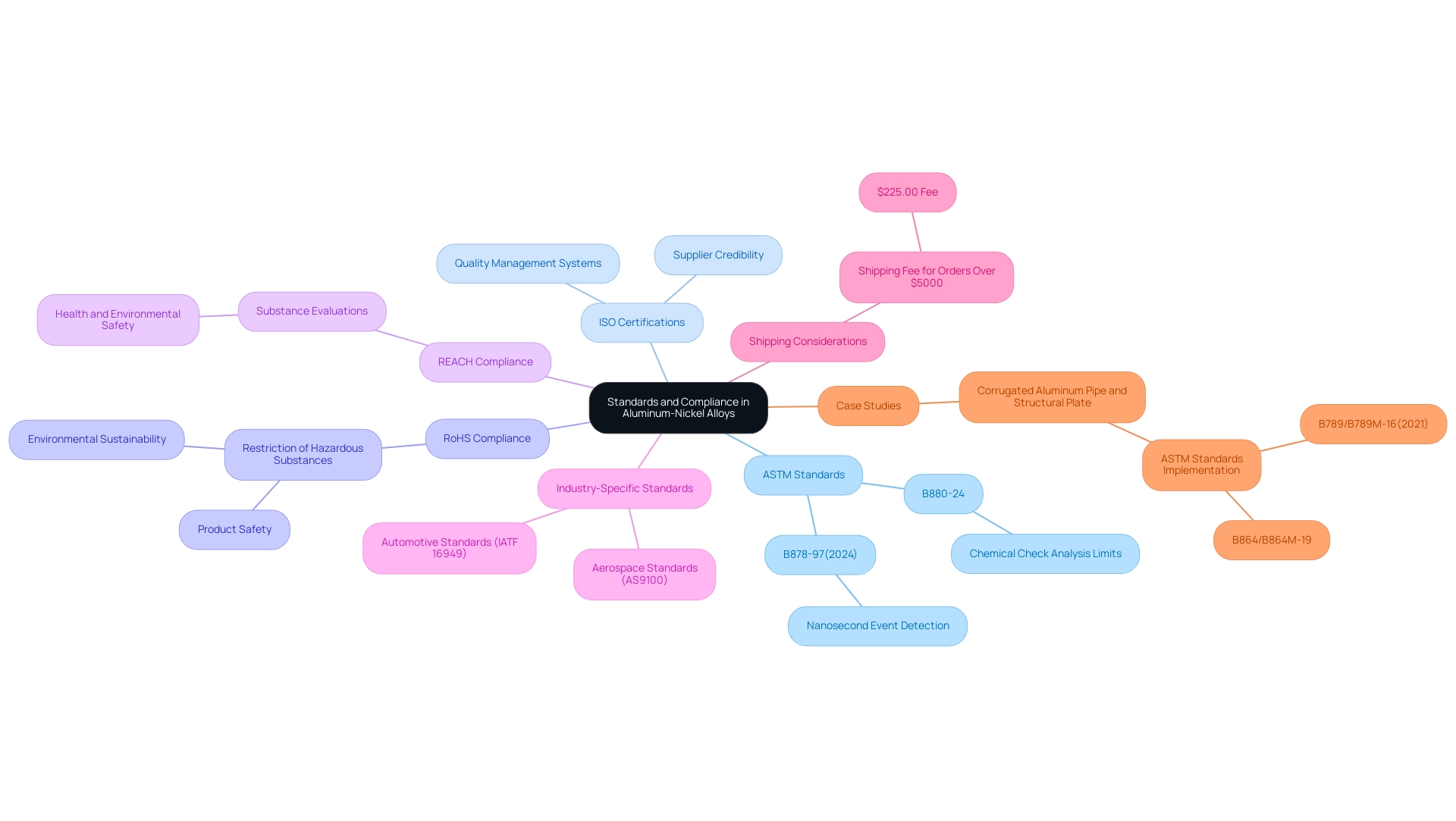
Future Trends in Aluminum-Nickel Alloys
The metal composite market is set for substantial change propelled by technological progress and evolving industry requirements. Key trends that procurement managers should monitor include:
- Industries are increasingly prioritizing fuel efficiency and reduced emissions, which has led to a heightened demand for lightweight aluminum nickel alloys, especially in the automotive and aerospace sectors. This trend is highlighted by the automotive sector’s supremacy in the global nickel composites market in 2023, suggesting a strong future for lightweight substances.
- Advancements in Material Composition: Continuous research is underway to enhance material compositions, potentially yielding improved performance characteristics. Innovations in formulations promise to make these materials even more appealing for critical applications across various domains.
- Sustainability Initiatives: A pronounced focus on sustainability is reshaping production practices. Suppliers that incorporate eco-friendly methods in their metal production are likely to gain a competitive advantage, reflecting the market’s shift towards greener practices. As mentioned in recent discussions, ‘Sustainability in the production of metal mixtures is not merely a trend; it is essential for future-proofing the industry.’
- Technological Innovations: The rise of advanced manufacturing techniques, including additive manufacturing (3D printing), is opening new avenues for the application of metal combinations. These innovations could redefine product development, catering to the demands for customization and rapid prototyping.
- Global Supply Chain Dynamics: Changes in international trade regulations and developing supply chain approaches are impacting the procurement of metal mixtures. As a result, procurement managers must remain adaptable to navigate these changes effectively.
Additionally, LME end-of-month off-warrant stocks reached 54,153 t in April 2024, the highest figure since reporting began in February 2020. This statistic underscores the current market conditions and trends influencing procurement decisions. By remaining knowledgeable about these trends, procurement experts can make strategic choices that align with expected market developments and improve their competitive stance in the metal sector.
Furthermore, the case study titled “Application Trends in Nickel Alloys” highlights that the automotive segment dominated the global nickel alloys market in 2023, illustrating the implications for aluminum nickel alloys and reinforcing the importance of adaptability in this evolving landscape.
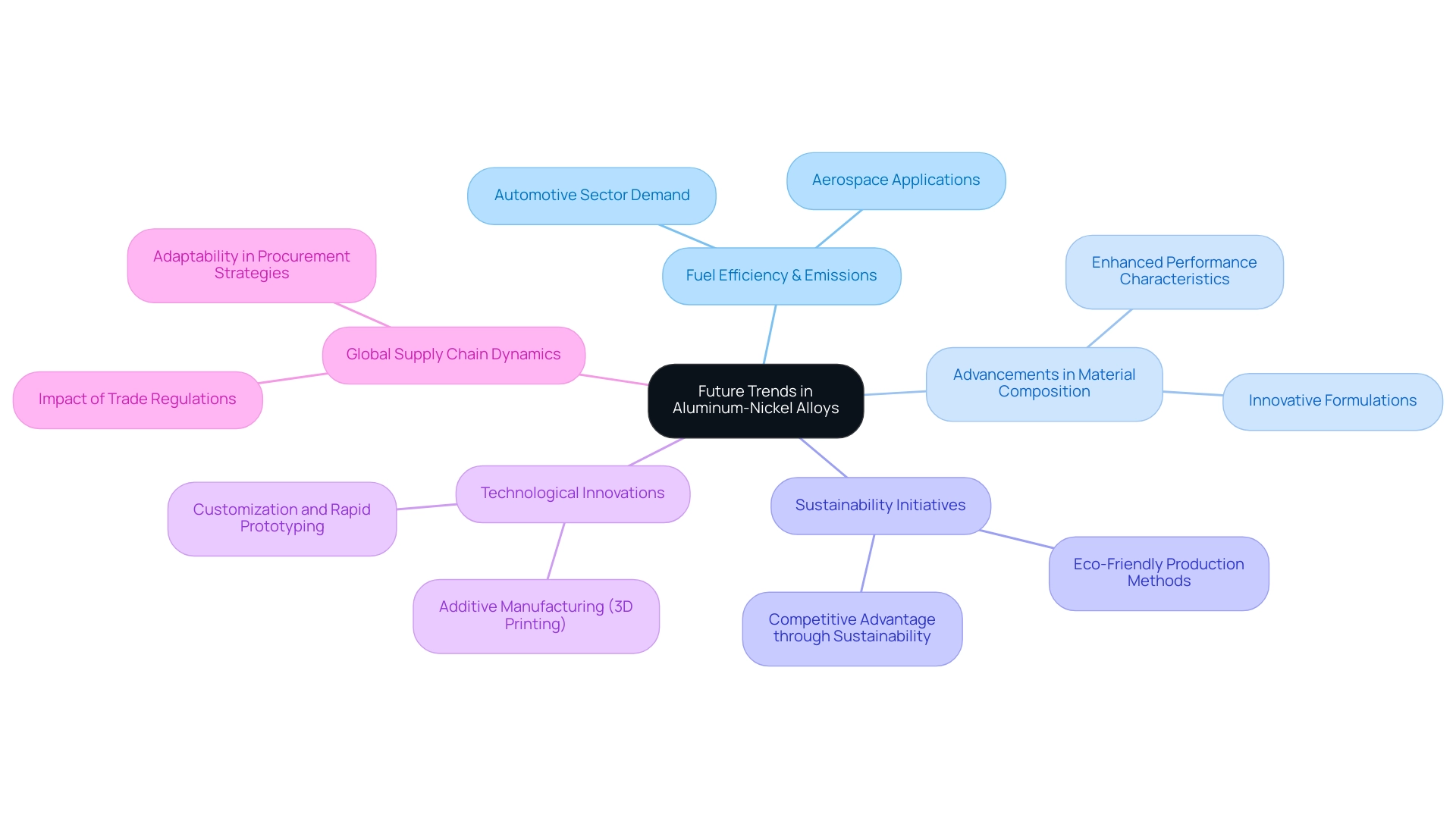
Conclusion
The exploration of aluminum-nickel alloys reveals their critical role in various industrial applications, driven by their unique properties such as:
- Corrosion resistance
- Lightweight composition
- Enhanced conductivity
- High strength
These characteristics not only meet the rigorous demands of sectors like aerospace, automotive, electronics, and renewable energy but also position these alloys as strategic assets for procurement managers aiming to optimize performance and sustainability.
Understanding the manufacturing processes behind aluminum-nickel alloys, including:
- Casting
- Forging
- Machining
- Heat treatment
- Joining techniques
is essential for ensuring that the materials selected will perform effectively in their intended applications. Compliance with industry standards and regulations further reinforces the reliability and safety of these alloys, making it imperative for procurement professionals to partner with certified suppliers who adhere to rigorous quality controls.
Looking ahead, the aluminum-nickel alloy market is set to evolve in response to increasing demands for lightweight and sustainable materials, advancements in alloy compositions, and innovative manufacturing technologies. Staying informed about these trends and the implications for procurement strategies will be vital for navigating the complexities of this dynamic market. As industries embrace eco-friendly practices and technological advancements, the strategic selection of aluminum-nickel alloys will remain crucial for achieving operational excellence and meeting future challenges.


